Discover 11 hidden attractions, cool sights, and unusual things to do in Wałbrzych (Poland). Don't miss out on these must-see attractions: Książ Castle, Porcelain Museum, and Old Mine. Also, be sure to include Church of the Guardian Angels in your itinerary.
Below, you can find the list of the most amazing places you should visit in Wałbrzych (Lower Silesian).
Table of Contents
Książ Castle
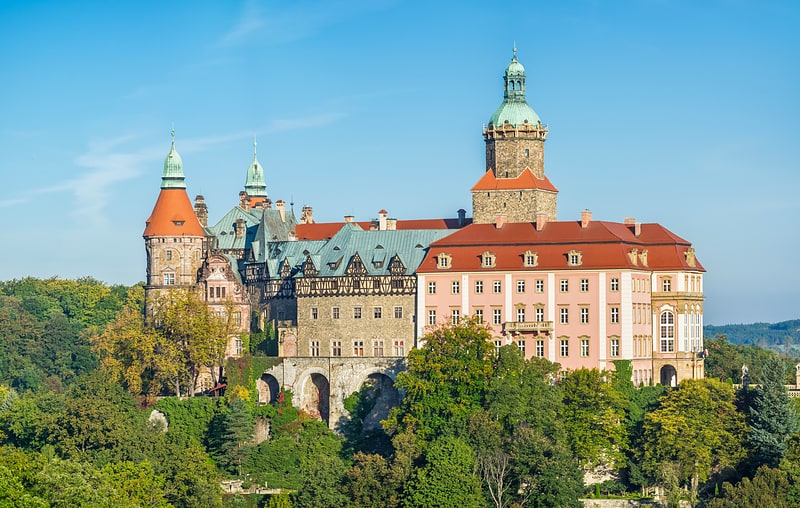
Also known as: Zamek Książ
Clifftop castle amid a dramatic forest. Książ is the largest castle in the Silesia region, located in northern Wałbrzych in Lower Silesian Voivodeship, Poland. It lies within Książ Landscape Park, a protected area located in the Wałbrzyski Foothills. The castle overlooks the gorge of the Pełcznica river and is one of the Wałbrzych's main tourist attractions.[1]
Address: Piastów Śląskich 1, 58-306 Wałbrzych
Porcelain Museum
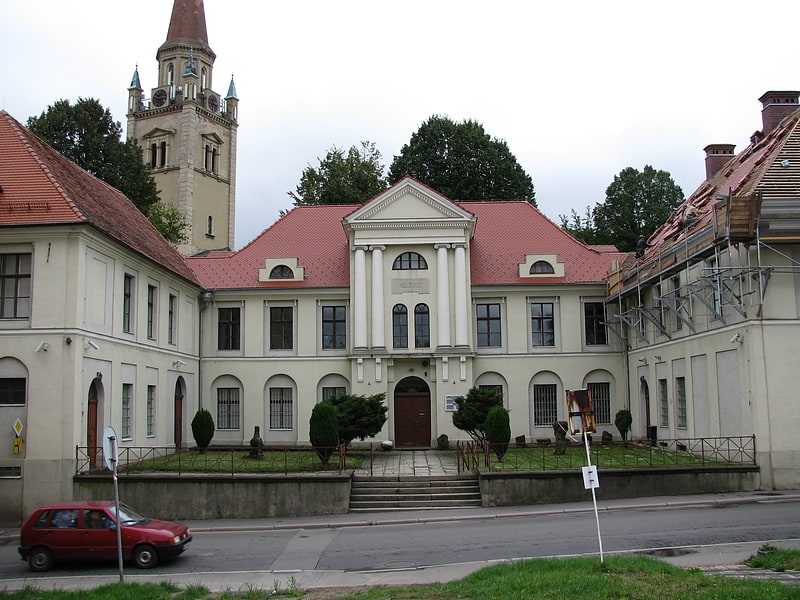
Porcelain Museum in Waldenburg - a museum founded in 1908 on the initiative of the Altertumsverein für das Waldenburger Gebirgsland set up by Julius Joppich and given the name Altertumsmuseum für das Waldenburger Gebirgsland. In 1926 the care for the museum, which changed its name to Heimatmuseum in Waldenburg, was taken over by the then City Council in Waldenburg. The collections were moved to the representative Alberti Palace in Walbrzych at 1 Maja Street, then Gottesbergerstrasse 23. The first full-time manager of the museum became Friedrich Stelter, and since 1936 the position was held by Heinrich Bartsch.
After the Second World War the collections of Wałbrzych museum were secured by local authorities. The first post-war curator and manager of the museum was Marek Sagan. Under his direction the collections of the museum were cleaned up and prepared for the reexhibition. In 1947 there was a ceremonial opening of the museum to the public. In 1949, the museum was nationalized and renamed to the Walbrzych Museum, with Eufrozyn Sagan as its long-term manager. In 1975, the Wałbrzych Regional Museum was elevated to the rank of the District Museum, covering the whole area of the newly created Wałbrzych Province.
Based on the decision of the Minister of Culture of 2002, the Walbrzych museum was entered in the National Register of Museums.
In 2015, after the renovation of its headquarters and a new arrangement of exhibition halls, the museum, so far playing the role of a regional museum, was transformed into the Porcelain Museum, focusing on exhibiting a collection of over 10,000 objects of Silesian porcelain (including those from Wałbrzych factories) and historical porcelain from European manufactories and factories (including Germany, Austria, the Czech Republic, Russia, Denmark, France, the Netherlands and England). Some of the rooms have been arranged in the style of an old bourgeois mansion with the use of own collections, mainly paintings, furniture and artistic crafts.
The museum also houses a collection of contemporary Polish paintings (with works by such artists as Jerzy Duda-Gracz, Franciszek Starowieyski, Zdzislaw Beksinski, Jerzy Nowosielski) and a collection of Polish ceramics from the 1950s and 1960s.
The museum functions as: Ceramics Department, Art Department, City and Regional History Department, Library, Education and Promotion Department
Address: 1 Maja 9, 58-300 Wałbrzych
Old Mine
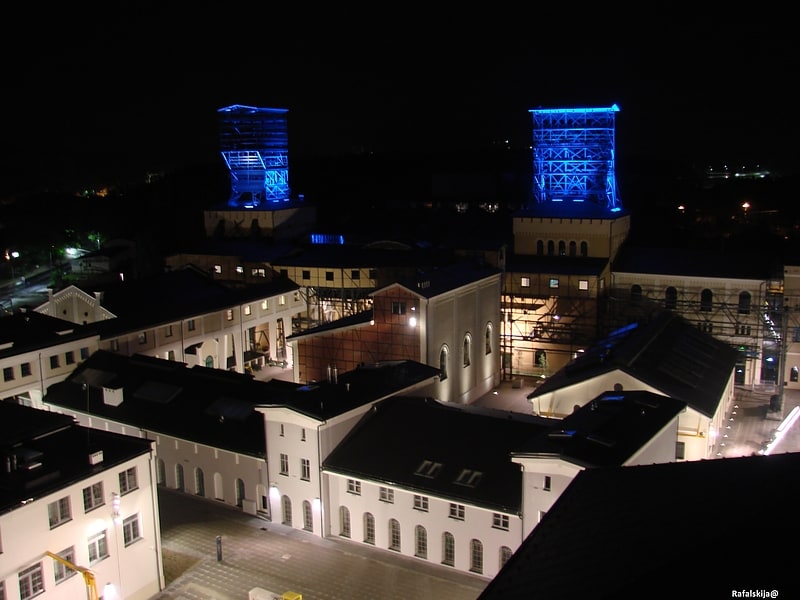
The Old Mine - Science and Art Centre in Wałbrzych is a museum located in the historic Julia Coal Mine. It was opened on 9 November 2014 after a major expansion of the Museum of Industry and Technology located there since 1999. The Old Mine - Science and Art Centre was included in 2015 on the list of the European Route of Industrial Heritage - ERIH.[2]
Address: Piotra Wysockiego 29, 58-304 Walbrzych
Church of the Guardian Angels

Collegiate Church of the Blessed Virgin Mary of Sorrows and St. Guardian Angels in Walbrzych - the seat of a deanery and the central church of Walbrzych. On 3 May 2010 it was elevated to the dignity of a collegiate church.
Address: 21 Stanisława Moniuszki, Wałbrzych
Palm House

Palm House in Walbrzych - a palm house with an area of about 1900 m², located in the Lubiechów district of Walbrzych, at 158 Wrocławska Street. It is one of the oldest buildings of its kind in Poland, built between 1911 and 1913 by order of Henry XV von Pless. The Palm House, which houses a cafe and a plant store, is open to the public. More than 250 species of plants from all over the world grow in the Palm House. The walls of the Palm House are covered from the inside by volcanic tuff from Etna.
Address: Wrocławska 158, Wałbrzych
Our Lady of Perpetual Help Church
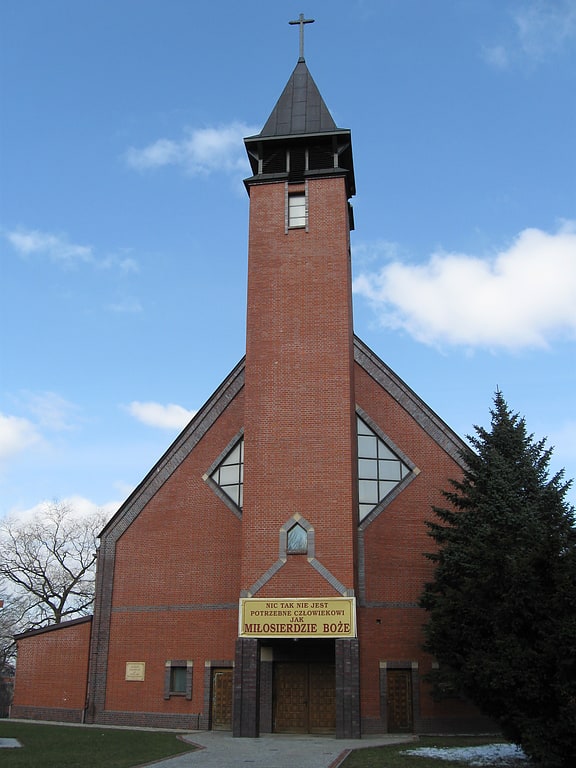
Parish Church of Our Lady of Perpetual Help in Walbrzych - a Roman Catholic parish situated in southern Walbrzych deanery, in Świdnica diocese. It was erected on June 27, 1989. Its first parish priest was the Rev. Kazimierz Marchaj, M.A. On June 27, 2014, after 25 years since the creation of the parish, the consecration of the church took place, which was performed by Msgr. Prof. Ignacy Dec.
Address: 12a Adama Asnyka, Wałbrzych
Kościół Zmartwychwstania Pańskiego

Church of the Resurrection in Walbrzych is a basilica-style church built in the Neo-Gothic style with a square tower with a spire helmet added on the left side.
It was built between 1867-1870 by Protestants according to the design of Karl Lüdecke. After the end of World War II both Protestant and Catholic services were held there.
Since March 1, 1972 the church has belonged to Roman Catholics, since it was bought by the Bishop's Curia in Wroclaw, where the church was located at that time.
The church has a nave covered with a gable roof and two side naves covered with monopitch roofs. On the front elevation above the portal there is a rose (rosette), which was renovated in 2008. Currently, it is the only originally preserved stained glass window, which was not replaced during the renovation in the 1970s.
The naves are separated from each other by a total of twelve square columns, which symbolize the Twelve Apostles. In the right nave there is an image of the Merciful Jesus, and on the side wall there is an image of St. Maximilian. The left nave, on the other hand, has since 2012 housed a special altar containing relics of the blood of Saint John Paul II.
The chancel is separated by an elevation and a transept and closed by a pentagonal apse. Three windows contain stained glass windows made in the 80s of the 20th century. They show the Resurrection of Christ, the Transfiguration on Mount Tabor and the Ascension. On the left wall of the apse closing the presbytery hangs a painting of the Visitation of the Blessed Virgin Mary, by Adolf Hyla. In the central part of the altar is the statue of the Risen Christ, which until 2015 was located above the rainbow arch of the presbytery.
In the gallery of the church there is a historic organ from 1871, made by Schlag & Söhne company from Świdnica. The instrument has 14 registers and mechanical: traction of playing and traction of registers.
As part of the renovation work carried out in the 21st century: in 2006 the roofing of the church tower was replaced, in 2007 the wall of the front and the church tower was cleaned, in 2008 the rosette was restored, in 2015 the statue of the Risen Christ was restored and placed in the chancel, in 2017 the main entrance portal, including the fanlight, was restored, in 2018 the roof over the northern and southern tracts was replaced, in 2019 the roof over the chancel was replaced, in addition, the windows were successively replaced with stained glass windows similar to the original between 2008 and 2012.
Address: Guglielmo Marconiego 3B, 58-300 Wałbrzych
Cerkiew Wszystkich Świętych
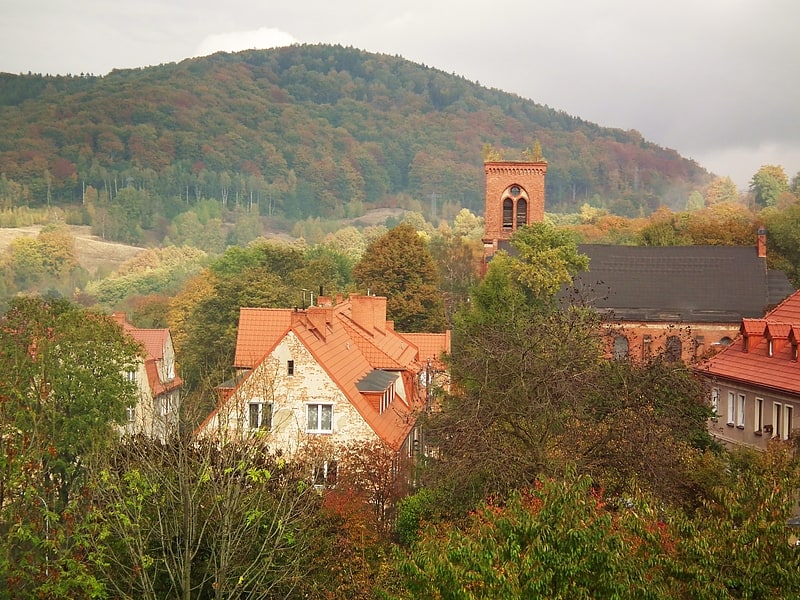
All Saints' Church - former Orthodox parish church in Walbrzych. It belonged to Wrocław deanery of Wrocław-Sczeciń diocese of the Polish Autocephalous Orthodox Church.
The building is located on Wladyslawa Reymonta street, in Podgorze II (upper) district.
This postevangelic neo-gothic church was built in the early 20th century. It was renovated after a fire in 1994. According to the plans of Dr. Jerzy Uścinowicz, an architect from Bialystok, a rotunda-shaped Orthodox church was to be built inside the church. These plans, however, were not carried out, and the building is currently not owned by the PAKP.
Address: 4A Władysława Reymonta, Wałbrzych
Stary Zdrój
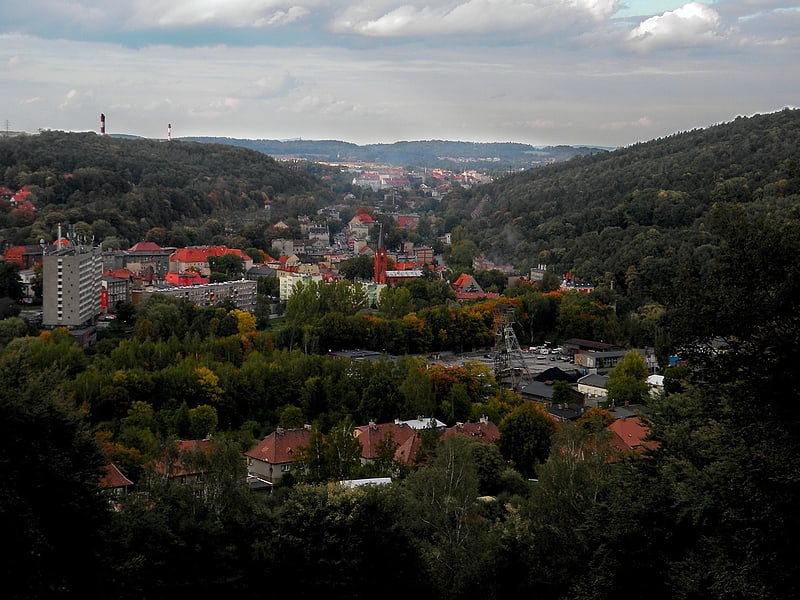
Stary Zdrój is a district of the city of Wałbrzych in southwestern Poland.
Formerly a spa town, it is located 43 m. by rail S.W. from Wrocław, and 3 m. N. from centre of Wałbrzych. It has factories for glass, porcelain (Fabryka Porcelany Wałbrzych S.A.), machinery, cotton-spinning, iron-foundries and used to have coal-mines.
The oldest known mention of the settlement comes from a 1357 document from the nearby Krzeszów Abbey, when it was under Polish rule as part of the Duchy of Świdnica. In 1900 the population was 12,144. There are two historic churches and a railway station in Stary Zdrój.[3]
Biały Kamień

Biały Kamień, formerly an independent city, is a residential district and administrative unit located in the western part of Wałbrzych. It is best known for having the oldest record of coal mining in the Wałbrzych region, dated 1561, and for being the home of the football club Zagłębie Wałbrzych.[4]
Galeria pod Atlantami

Library
Address: Rynek 9, Wałbrzych